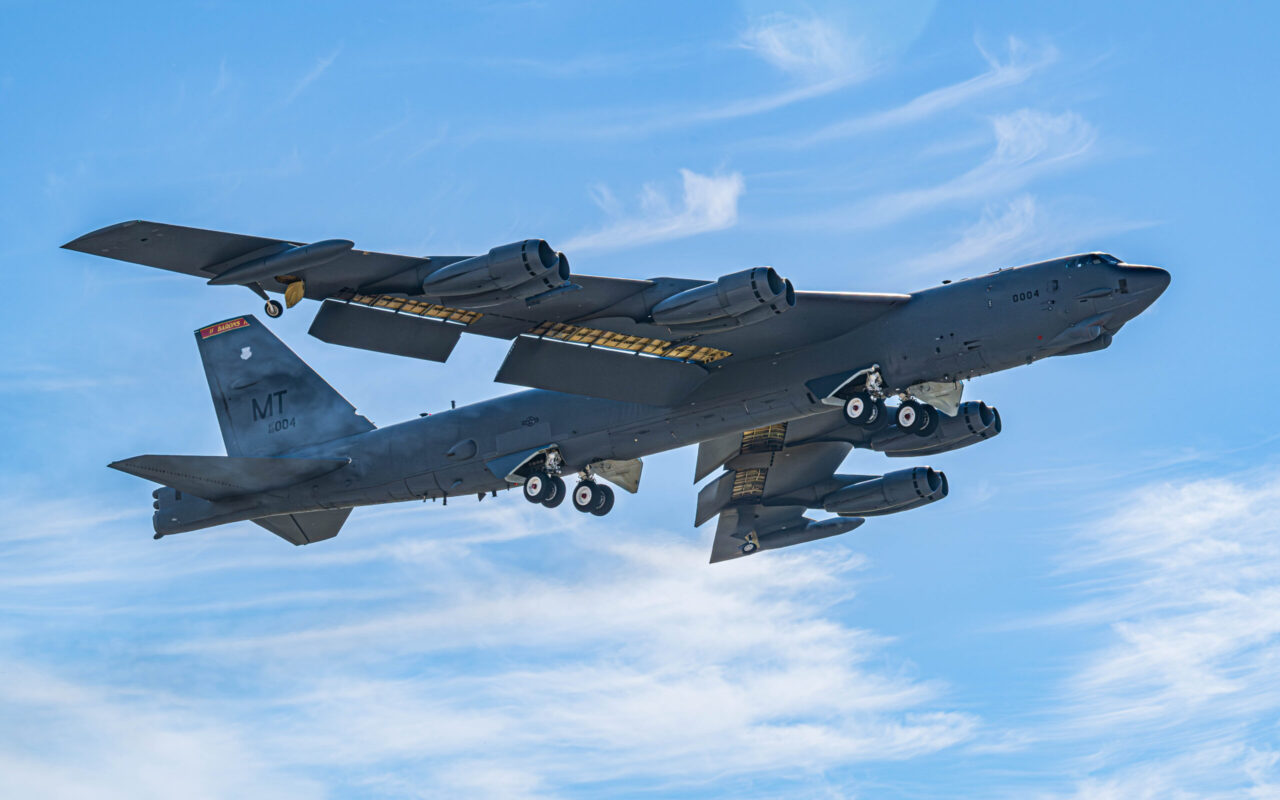
An Air Force B-52 Nearly Collides with a Civilian Airliner
The B-52 can fly at a top speed of Mach 0.86, outpacing the maximum operating speed for commercial airlines.
A near collision between a US Air Force B-52 “Stratofortress” and a commercial airliner this week has monopolized media headlines, serving as a reminder of the shared airspace between military and civilian aircraft. The B-52 was in the air to conduct a flyover at the North Dakota State Fair, while the Delta Air Lines flight was carrying passengers from Minneapolis to Minot, North Dakota.
In a statement about the incident, the Air Force said, “At approximately 7:10 p.m. prior to the flyover, the B-52 crew contacted Minot Approach (RAPCON) to prepare for the flyover. Required checklists were completed, and the crew remained in contact with Minot Approach as it flew to its holding point 12 miles east of the fairgrounds. While holding, the B-52 crew communicated the flyover plan to both RAPCON and Minot International Airport’s air traffic control tower. Minot Approach directed the B-52 crew at 7:43 p.m. to contact Minot International Airport’s air traffic control. The B-52 crew contacted Minot International Airport tower and the tower provided instructions to continue 2 miles westbound after the flyover. The tower did not advise of the inbound commercial aircraft.” Ultimately, the pilot flying the Delta Air Lines plane performed an aggressive maneuver in order to avoid colliding with the bomber.
The B-52
Following the near miss, the Delta Air Lines pilot apologized to passengers on board for the drastic turn made to avoid collision. The pilot noted that the military aircraft appeared to be flying “a lot faster,” which led to the decision to rapidly turn the passenger plane behind it. Considering the bomber in question is the B-52 Stratofortress, the Delta pilot certainly made the right call. The legendary Air Force platform can fly at a top speed of Mach 0.86 (times the speed of sound), outpacing the maximum operating speed for commercial airlines. As one of the service’s intercontinental range strategic bombers, the B-52s play a significant role in the military’s offensive and deterrence capabilities.
Following World War II, the United States required a new bomber series able to carry out operations abroad without needing to rely upon bases controlled by other countries. All the big-name manufacturers at the time proposed new designs, including Boeing, Glenn L. Martin Company, and Consolidated Aircraft. Eventually, Boeing’s proposal beat out its competitors, leading to the B-52 series.
Over its seven decades in service, the Stratofortress has undergone several facelifts in order to remain current and formidable. The newest iteration can carry up to 20 air-launched cruise missiles, in addition to conventional cruise missiles. The B-52H variant also features the combat network communications technology program, which allows for real-time, in-flight intelligence information sharing. The upcoming B-52J variant is expected to be even more capable. Specifically, the bomber’s engine will include a new power generation system that will provide a 30 percent gain in fuel efficiency. In terms of ordnance, the B-52J will be equipped with the hypersonic attack cruise missile, a Mach-5.0 scramjet-powered cruise missile that will be extremely challenging for enemies to shoot down.
About the author: Maya Carlin
Maya Carlin, National Security Writer with The National Interest, is an analyst with the Center for Security Policy and a former Anna Sobol Levy Fellow at IDC Herzliya in Israel. She has bylines in many publications, including The National Interest, The Jerusalem Post, and The Times of Israel. You can follow her on Twitter: @MayaCarlin.
Image: DVIDS.
The post An Air Force B-52 Nearly Collides with a Civilian Airliner appeared first on The National Interest.


















